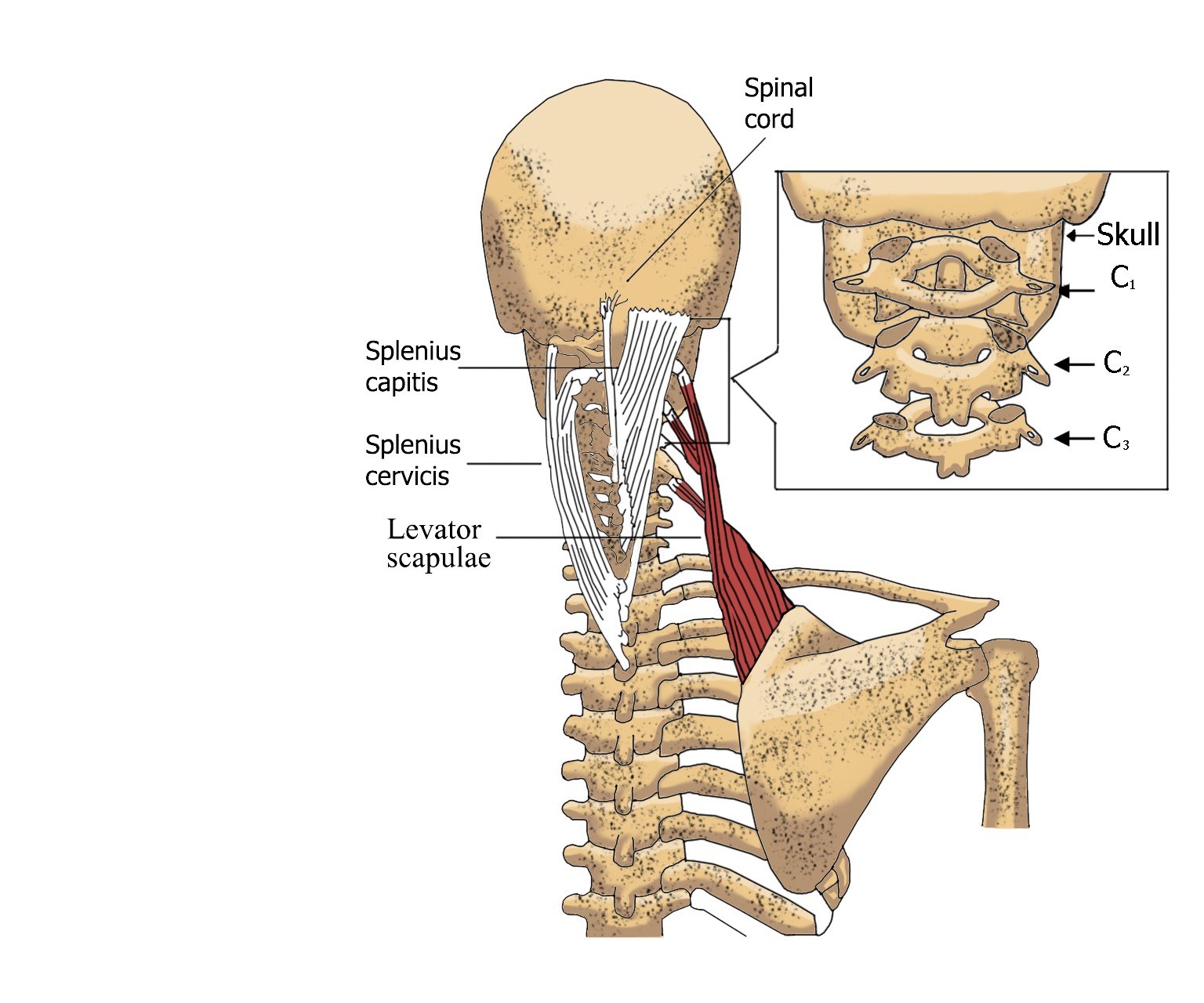Headaches are among the most debilitating pains suffered by people worldwide – yet too often the cause of the headache goes undiagnosed.
Today I want to talk about a small muscle called levator scapulae. The levator scapulae has the nickname “shrug muscle” because when it contracts you lift your shoulders up and shrug. Think of how many times a day you lift your shoulder – no wonder it gets repetitively strained.
The headache problem comes from the fact that the levator scapulae originates on the first four cervical vertebrae and then inserts into your shoulder blade. When the muscle gets shortened because of repetitive strain injury it will pull the four vertebrae down and to the side. That’s a big enough problem since you’ll feel the pull on the bone, which will feel exactly the same as your scalp feels when you pull your hair. But the real problem is more involved.
This gets a little bit technical, but if you look at the graphic while I’m explaining it, it will make sense.
Look at the small box on the top right. C2 shows a bone sticking up into the opening of C1. The bone, which looks like a finger pointing up, is called the “dens.” Your skull sits on this point and it’s the reason you can tilt your head up & down, and side-to-side. Now, looking at that graphic, think about the fact that your brain merges into your spinal cord and then your spinal cord passes through the center of each of these vertebrae, like a rope passing through the link of a chain.
The points on the left and right of each vertebrae are the points where the levator scapulae originates, and next look at the larger picture and you’ll see where the muscle inserts into your shoulder blade (scapula). When the muscle shortens due to repetitive strain injury it will pull the two ends toward each other. As this is happening the bones are tilting to the side of the tightness, causing the inside of the circle of bone to be pressing directly into your spinal cord.
With this understanding, think of what happens when a person has whiplash. The violent swing of the skull not only seriously knots up each of the muscles that insert into each of the cervical vertebrae from the skull to the upper back, it also stretches nerves, moves bones so they are pressing into the spinal cord, and causes compression on each of the disks between each vertebrae. The first thing that needs to happen, even before trying to re-set the bones in proper order, is to release the multiple spasms in the neck and shoulders. As these muscle spasms are released the bones can then be safely re-aligned to take the pressure off the nerves.
In Treat Yourself to Pain-Free Living you can learn how to treat each of the muscles that are affected by whiplash, and start your healing process immediately.
If you try to stretch the muscle without first releasing the knots (spasms) in the fibers, you will make the spasms tighter and overstretch the fibers on either side of the spasm. To make it worse, the muscle will again shorten and you’ll end up in the same place, except the muscle fibers have been injured. It’s easy to release the spasms by applying pressure on the proper points and holding it steady.
The best news is…headaches will stop! If you have headaches, taking the pressure off your spinal cord at the very base of your brain is close to a miracle – but it’s actually just body-logic.
I’ve worked with thousands of people through the years, most of them I haven’t met in person, and they have eliminated their pain by using what I teach in my books and DVDs. I truly believe you can eliminate the debilitating pain of headaches, as well as other aches and pains.
Wishing you well,
Julie

